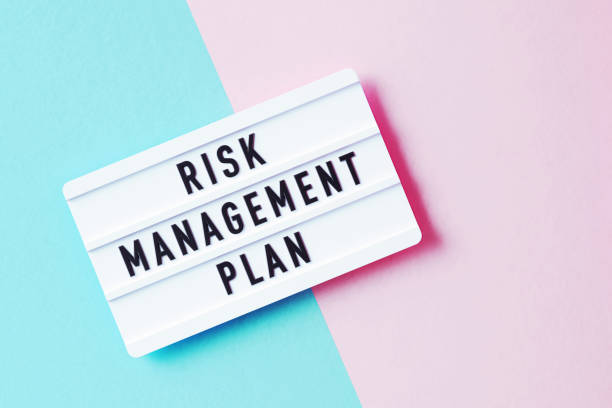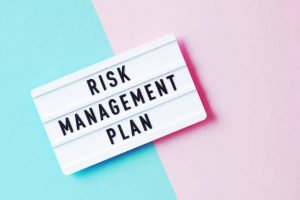Monitoring and reviewing risk management plans is an important part of any accounting practice. Risk management plans are designed to provide a framework for identifying, evaluating, mitigating, and monitoring potential risks associated with the operations of an organization. This article will look at the importance of regularly monitoring and reviewing these plans in order to ensure that they remain effective and up-to-date. Furthermore, it will discuss techniques that can be used when conducting regular reviews as well as the benefits of doing so.
Risk management is essential for organizations looking to stay competitive in their respective markets. It enables them to identify potential threats early on and take steps to mitigate or eliminate those risks before they become unmanageable. Regularly assessing one’s risk management plan helps ensure that all identified risks have been addressed properly and new ones have not arisen since its last review. Such assessments also help prevent costly mistakes due to outdated information or missing data points within the plan itself.
Finally, this article will examine how technology can assist in improving the efficiency of risk management reviews by providing real-time updates about changes or developments in key areas such as industry regulations or market conditions. Automated processes allow accountants to quickly scan through large volumes of data while still retaining accuracy and effectiveness when making decisions regarding risk mitigation strategies. With this knowledge, organizations can make timely adjustments while ensuring compliance with current standards and best practices in risk management planning.
Definition Of Risk Management
Risk management, in its simplest form, is the process of identifying and assessing potential risks, mitigating them to acceptable levels, and monitoring for future changes. It seeks to protect organizational resources, operations, assets, employees, or other stakeholders from harm caused by possible events or actions. Risk assessment involves analyzing existing circumstances within an organization that could lead to a risk event. This includes both internal elements such as policies and practices; external factors such as economic conditions; and environmental considerations including weather patterns. After analysis of all data points, risk mitigation strategies are implemented to reduce the likelihood of the identified risks occurring. Once completed, it is important to evaluate how well these measures were effective at reducing the associated risk level. Finally, regular monitoring should be conducted to ensure that any new developments in terms of technology or market forces do not present additional threats or opportunities which may require further action. In this way, organizations can maintain their overall risk profile while also taking advantage of advantageous situations when they arise. Through diligent evaluation and oversight techniques, companies gain the opportunity to identify corrective actions before costly losses occur due to unforeseen events or mistakes.
Benefits Of Monitoring And Reviewing Risk Management Plans
Monitoring and reviewing risk management plans are a vital part of any organization’s efforts to protect resources, operations, assets, employees or other stakeholders from potential harm. By closely tracking the effectiveness of existing measures and actively seeking new opportunities for mitigating risks, organizations can ensure they remain in control of their overall risk exposure. The benefits of regular monitoring and review are numerous; by proactively evaluating the efficacy of current strategies, companies gain the opportunity to quickly identify corrective actions before losses occur due to unforeseen events or mistakes. In addition, regularly examining risk mitigation techniques allows firms to stay ahead of changing market conditions or technological advances that may create new threats or provide beneficial opportunities.
In essence, monitoring and reviewing risk management plans offers organizations an effective way to manage their own destiny when it comes to managing risks. With careful oversight and evaluation processes in place, firms can adjust their strategy as needed while still maintaining a safe level of protection against damaging outcomes. Through this approach, businesses have the power to not only reduce the likelihood of costly incidents occurring but also benefit from advantageous situations when they arise.
Identifying Risks And Assessing Their Impact
Identifying risks and assessing their impact is a key component of any risk management plan. Risk analysis involves the process of analyzing potential sources of risk, determining the possible levels of associated loss or damage, and evaluating the likelihood that they will occur. This information can be used to create an overall picture of an organization’s exposure to different types of threats. Risk assessment then takes this data one step further by examining how various factors may influence the probability of certain risks occurring as well as what type of impact those events could have on operations, assets, personnel, or other stakeholders if they do happen.
Risk identification requires organizations to look in depth at both internal and external environments for potential hazards. Internal elements such as organizational structure, processes, policies, and procedures should all be examined while also accounting for external influences like economic conditions, political unrest, or natural disasters that might increase vulnerability to certain dangers. By pinpointing areas where losses are most likely to take place due to these risk factors, companies gain insight into which strategies need to be developed in order to reduce future incidents from happening.
Once potential risks have been identified, it is important for businesses to conduct an impact assessment in order to determine the magnitude of their effect on operations and resources if they were realized. In addition to exploring tangible impacts such as financial losses or reputational harm, firms should also examine more intangible effects such as employee morale or customer satisfaction when making decisions about how best to mitigate risks going forward. With a comprehensive understanding of each threat’s severity and reach across various parts of their organization gained through risk analysis and assessment techniques, companies can begin devising strategies tailored specifically towards reducing their chances for major disruption down the road.
Developing Strategies To Mitigate Risk
With the risk assessment complete, it is now time to develop strategies that will help minimize the impact of identified risks. Risk prevention involves proactively seeking out potential areas of concern and taking steps to ensure they are addressed before any losses can occur. This may involve introducing new policies or procedures, enforcing regular maintenance checks on equipment, or providing additional training for staff members in order to reduce their exposure to hazardous conditions. Additionally, an organization’s overall risk analysis should be regularly revisited in order to identify any changes that might have occurred since the initial review was conducted. By actively monitoring the environment for signs of emerging threats, businesses gain valuable insight into how best to protect themselves from future hazards.

Risk avoidance goes one step further by eliminating certain activities altogether if they pose a significant amount of danger. For example, some organizations choose not to enter volatile markets due to fears that political instability could lead to major financial losses down the line. And while this strategy comes with its own set of challenges (such as missed opportunities), it often proves beneficial in protecting against catastrophic events when used judiciously. Lastly, companies must also consider ways in which they can mitigate existing risks through reduction techniques such as hedging investments or diversifying portfolios across multiple sectors. While these methods cannot eliminate all chances for failure entirely, they do provide an added layer of protection against large-scale disruptions and help create a more resilient business model over time.
Effective risk management requires a well-thought-out plan that takes into account both proactive and reactive measures designed specifically toward minimizing vulnerability levels within an organization’s operations and resources. Companies must take great care when creating these plans so as to maximize their ability at avoiding serious harm down the road while still allowing them enough flexibility to capitalize on available opportunities whenever possible
Implementing A Risk Management Plan
Implementing a risk management plan is essential for any organization looking to reduce its exposure to potential losses. There are several key steps that need to be taken in order to ensure the successful implementation of this strategy:
- Develop an actionable plan – It is important for businesses to create a detailed and comprehensive risk management plan that outlines how identified risks should be addressed. This document should include clear objectives, strategies for mitigating risk, and timelines for when each step needs to be completed.
- Implement the necessary changes – Once the plan has been finalized, it must then be put into practice by executing all related activities such as creating policies or procedures, training staff members on new protocols, introducing more stringent maintenance checks on equipment, etc.
- Monitor performance – The effectiveness of the implemented strategies should be tracked over time so any areas of concern can quickly be identified and dealt with accordingly. Companies may also want to consider regular reviews of their overall risk analysis process in order to identify any changes since the initial assessment was conducted.
- Evaluate periodically – Organizations should evaluate their risk mitigation plans regularly against predetermined criteria in order to assess whether they are meeting expectations and helping minimize vulnerability levels within operations and resources.
By following these steps, companies will have created a robust system capable of identifying threats early enough before serious damage can occur while still allowing them enough flexibility to capitalize on available opportunities whenever possible. Moving forward, it is crucial that organizations continue monitoring their environment for signs of emerging risks and updating their plans accordingly in order to maintain optimal protection from future hazards.
Evaluating The Effectiveness Of The Plan
Evaluating the effectiveness of a risk management plan is an important step in ensuring that it meets the needs and expectations of an organization. To review performance, one must first determine what metrics are necessary to evaluate the success of implemented strategies. This includes assessing whether objectives have been met if any threats were accurately identified and addressed and if any opportunities surfaced as expected. After gathering this data, companies can then compare their results against predetermined benchmarks in order to gain insight into how well their plans are working out.
It is also essential for organizations to assess potential weaknesses or areas where improvements need to be made on a regular basis. As part of this process, they should consider both internal factors such as personnel resources available and external influences like new legislation or market trends which could potentially alter existing conditions. By doing so, businesses will be better equipped to identify areas needing attention before they become issues while still allowing them enough flexibility to capitalize on emerging possibilities when needed.
TIP: Risk management reviews need not only involve quantitative analysis but also qualitative assessments by stakeholders who may see things differently than others within an organization. Gathering feedback from various perspectives allows for more informed decision-making about future strategies which can help mitigate impact should unexpected circumstances arise.
Factors To Consider When Reviewing A Risk Management Plan
When reviewing a risk management plan, it is important for organizations to consider all aspects of the process. This includes factors such as: assessing potential risks, conducting an analysis of their likelihood and impact, determining how to best mitigate each threat, and finally understanding any residual risk exposure that remains after implementing strategies. By taking these steps, companies can ensure that they have properly identified and addressed issues while still allowing them enough flexibility to capitalize on opportunities when viable.

In addition to the aforementioned considerations, organizations should also take into account how well their plans are being monitored over time. As conditions may change or new threats emerge, it’s essential that businesses be able to quickly adapt to changing circumstances in order to remain competitive in today’s volatile environment. To facilitate this process, many firms now employ monitoring tools such as software solutions that allow for real-time tracking of performance metrics so that adjustments can be made if needed.
By considering the various elements discussed here during reviews of existing risk management plans, businesses will be better equipped to identify areas needing attention before they become major problems while still maintaining a level of preparedness for whatever comes next.
Monitoring Tools And Software Solutions
While having a risk management plan in place is an important first step for organizations, it’s equally crucial to have the right monitoring tools and software solutions in order to properly track performance over time. By employing such technology, companies will be able to measure their progress against established objectives while also being able to identify any areas where improvement may be needed. This can help ensure that plans are updated regularly and that changes are made as necessary based on ever-shifting conditions or new threats which arise.
In addition, certain risk review software packages provide automated features which allow users to quickly scan through various sources of data so they can more easily assess potential risks and determine how best to mitigate them. Other systems offer comprehensive reporting capabilities which give executives insight into how well strategies are working across all departments within the organization. With these types of solutions available, businesses can gain greater visibility into their processes while still keeping up with current industry trends.
Finally, specialized risk assessment software provides users with detailed analytics regarding the nature of each threat and its impact if left unchecked. Using this information, companies can make better decisions about what steps need to be taken in order to reduce or eliminate exposure levels before major issues occur. As such, investing in quality monitoring tools and software packages should be considered essential for any business looking to stay ahead of the competition when managing operational risks.
Reporting On the Performance Of The Plan
Once the appropriate monitoring tools and software solutions have been implemented, organizations can begin to measure their risk management performance. By utilizing various risk measuring techniques such as trend analysis or key performance indicators (KPIs), companies will be able to identify areas of improvement and effectively track progress over time. Additionally, having these metrics in place helps ensure that all departments within the organization are working together cohesively towards a common goal.
Furthermore, developing a reporting process that allows executives to easily review and analyze data is essential for ensuring that plans remain up-to-date with any changes in external conditions or new threats which arise. Risk assessment results should be shared among stakeholders so they can make informed decisions regarding potential risks and how best to mitigate them. This way, businesses can remain proactive when it comes to managing operational risks rather than being reactive after an issue has already occurred.

In addition, investing in quality risk management tools can help streamline the entire process by providing users with automated features for quickly scanning through different sources of data. With this type of technology available, firms have greater insight into their processes while still staying ahead of industry trends. The ability to track and report on performance also makes it easier for decision-makers when determining what adjustments need to be made as necessary.
Making Adjustments As Necessary
It is often said that the only certain thing in life is change. This rings especially true when it comes to risk management plans, as external conditions and threats are constantly shifting. As such, organizations must be flexible and willing to adjust their plan if necessary in order to ensure optimal performance of the strategy. Adjusting existing risks or developing new ones can help businesses stay ahead of changes while mitigating potential issues before they become a problem.
Accountants should monitor all activity related to risk management on an ongoing basis; this includes assessing current trends, monitoring KPIs, refining strategies, and making sure that any adjustments needed are implemented quickly and effectively. Additionally, having strong communication channels between departments will ensure everyone has access to up-to-date information about any changes which have been made so that operations remain efficient throughout the entire process.
Finally, companies need to review their plans regularly with stakeholders at different levels in order to identify areas for improvement and make sure objectives are still realistic given changing conditions. Risk assessment results should also be used as evidence when constructing future plans so that similar issues do not arise again down the line. By taking these steps, firms can gain better control over their risk mitigation processes while remaining agile enough to respond swiftly when required.
Frequently Asked Questions
When considering the cost of implementing a risk management plan, there are several factors to consider. Budgeting is an important part of this process as it can help ensure that funds are allocated appropriately for the implementation and ongoing maintenance of the plan. It is also necessary to consider any potential compliance costs associated with the plan. In addition, companies should weigh up the potential benefits versus the cost when deciding whether or not to implement a risk management plan.
The exact cost of implementing a risk management plan will vary depending on its complexity, but it usually involves significant investments in both resources and time. Companies need to be aware of these costs before they start their implementation journey so they can budget accordingly and ensure they have sufficient capital available for the project. This could include allocating money towards training staff who may be involved in operating or managing any risks identified within the plan. Other expenses could involve audit fees if external assistance is required during implementation or ongoing reviews of performance against objectives set out in the plan itself.
Ultimately, businesses must take into account various financial considerations to determine how much investing in a risk management plan would cost them overall. An analysis needs to be done to assess if this investment would provide returns over time that outweigh initial outlays made from budgets and other sources such as compliance costs. By doing this assessment, companies can make informed decisions about whether undertaking a risk management program is worth pursuing their organization’s success going forward.
When it comes to managing risk, the stakes are incredibly high. Every business needs an effective plan for monitoring and reviewing its risk management plans – if this process isn’t done well, then a company’s security is at stake! It doesn’t matter how great your initial risk management plan was; what matters most is that you have good practices in place for constantly monitoring and reviewing it.
So, what are some of the best practices when it comes to monitoring and reviewing risk management plans? First off, organizations must make sure they understand the importance of having an up-to-date risk review plan in place. This includes understanding their organization’s unique risks, as well as staying abreast of any changes or new developments through regular reviews. Additionally, organizations should also consider conducting internal audits on a regular basis to ensure that all processes related to risk management planning remain accurate and effective. Here are four key points to remember when it comes to implementing a successful risk review plan:
• Develop specific objectives and metrics for assessing progress toward meeting those objectives
• Establishing periodic reports outlining current performance against accepted standards
• Periodically evaluating existing processes to identify areas needing improvement
• Identifying opportunities for proactive measures such as employee training or additional resources
These considerations will help organizations stay on top of potential risks posed by external events or market conditions. The goal is not only to protect against unexpected outcomes but also to capitalize on new opportunities presented by changing circumstances. For example, businesses may need to adjust their strategies depending on market shifts or other environmental factors. A comprehensive approach can be used here which combines elements from both qualitative and quantitative methods such as cost/benefit analysis along with more subjective assessments like surveys or interviews. By incorporating these different approaches into one cohesive strategy, companies can maximize the effectiveness of their overall approach while minimizing the associated costs.
Ultimately, creating an efficient system for regularly monitoring and reviewing risk management plans requires careful consideration and thoughtful implementation. Organizations must assess their own unique needs and develop appropriate procedures accordingly. Doing so will enable them to minimize exposure while maximizing returns over time – ensuring long-term success regardless of external threats or challenges faced along the way.
The review frequency of a risk management plan is an important factor to consider when planning and implementing effective risk management strategies. The intervals at which the plan should be reviewed need to account for both the changing external environment, as well as any internal changes that may have occurred. Depending on the structure of the organization, different factors can influence the appropriate review timeline for a risk management plan:
• Nature of Business Operations – Different levels of complexity or volatility in business operations will require shorter or longer review cycles
• Risk Tolerance – Organizations with higher risk tolerance may require more frequent reviews
• Company Size – Smaller organizations typically have fewer resources for monitoring risks, so they often require more frequent reviews than larger organizations
• Regulatory Requirements – It is essential to comply with regulations concerning reporting deadlines, audit requirements, and other compliance matters When deciding how often a risk management plan should be reviewed, it is critical to assess these key components before setting a specific timeline. Additionally, assessing the effectiveness of current strategies should also inform decisions about future plans. Establishing routine intervals for reviewing and updating existing plans helps ensure that potential risks are identified quickly and addressed efficiently. Furthermore, regularly scheduled assessments enable companies to adjust their strategy accordingly in response to new developments while allowing ample time between each review period to implement corrective measures.
When developing a risk management plan, there are critical legal and regulatory requirements to consider. Crafting an effective risk compliance strategy involves understanding the rules that must be met. It is essential for organizations to regularly review their plans in order to meet these obligations.
Firstly, ensuring your organization’s risk management plan meets all relevant legal and regulatory standards is fundamental. For instance, monitoring changes within industry regulations can have significant implications on any existing strategies. Additionally, organizations should be aware of external factors which may influence their ability to comply with current regulations; such as economic context or technological advances.
Secondly, when creating a risk management plan it is key to factor in potential risks into the process. This entails both evaluating risks before they occur and being able to respond effectively if they do arise – this includes preparing contingency plans where needed. Furthermore, there needs to be ongoing assessment of new threats while reviewing previous solutions already put into place so as not to identify any gaps that could lead to potential losses down the track.
Thirdly, having established goals and objectives allows for smoother implementation of a robust risk management system. These will help define success criteria from the outset enabling clear communication between stakeholders across the entire organization about how performance should be managed going forward. Moreover, setting measurable targets to ensure accountability at every stage thus safeguarding against any eventualities yet still remaining agile enough to adapt quickly when necessary.
Overall, having a sound knowledge of applicable legal and regulatory requirements combined with practical measures like goal setting enable organizations to develop comprehensive risk management plans which mitigate exposure to various risks whilst achieving desired outcomes efficiently and cost-effectively over time.
When developing a risk management plan for an organization, it is important to ensure that the plan is tailored to its specific needs. To do this effectively requires thorough risk assessment and identification of potential risks as well as risk mitigation strategies. A robust risk-management strategy can help prevent or reduce losses due to unexpected events or circumstances.
The first step in tailoring a risk management plan is to conduct a comprehensive risk assessment. This involves identifying potential risks based on the company’s current operations, financial status, industry sector, etc., then estimating their likelihood and impact on the business if they were to occur. Once these risks have been identified, the next step should be to develop appropriate mitigating strategies so that any negative impacts are minimized or eliminated entirely.
Risk prevention strategies should also be implemented where possible. These may include measures such as ensuring assets against loss, introducing quality control processes, and implementing secure IT systems which protect sensitive information from unauthorized access or misuse. By taking proactive steps to identify and manage risks before they become problems, organizations can gain greater peace of mind knowing that their activities will remain protected even when unforeseen events take place.
Therefore, ensuring that a risk management plan is tailored specifically for an organization requires careful consideration of both internal and external factors and thoughtful planning with regard to assessing potential risks and formulating suitable preventive strategies. Through this process, businesses can achieve greater protection from unpredictable threats while simultaneously improving operational efficiency across all aspects of their operations.
Conclusion
Risk management plans are an integral part of any organization. As such, it is essential that these plans be monitored and reviewed on a regular basis in order to ensure their efficacy. In order to fully realize the benefits of implementing a risk management plan, organizations must consider the cost involved as well as the best practices for monitoring and reviewing them. Additionally, legal or regulatory requirements that must be met when developing a risk management plan should also be taken into consideration. It is important for businesses to take steps to customize their risk management plans so they reflect their specific needs and goals.
Ultimately, effective monitoring and review of risk management plans can allow companies to stay ahead of potential risks and make sure that resources are being allocated appropriately. Companies should strive not only to monitor but also evaluate how the plans have been implemented and whether they meet the established objectives. Regular reviews will help identify areas where adjustments may need to be made in order to better address certain types of risks or changing circumstances within the organization. To put it another way, having a comprehensive risk assessment strategy “in place” is worth its weight in gold when it comes to ensuring business continuity and success over time.



